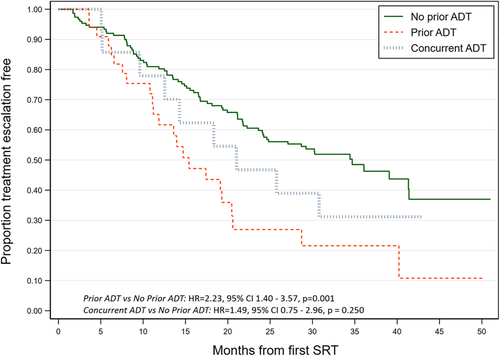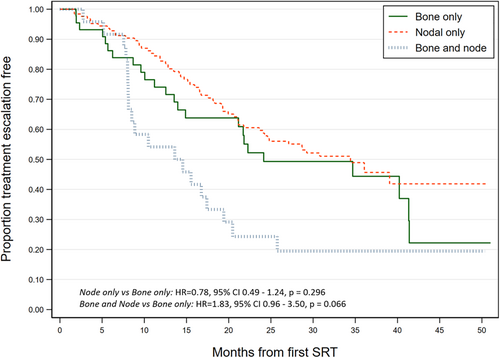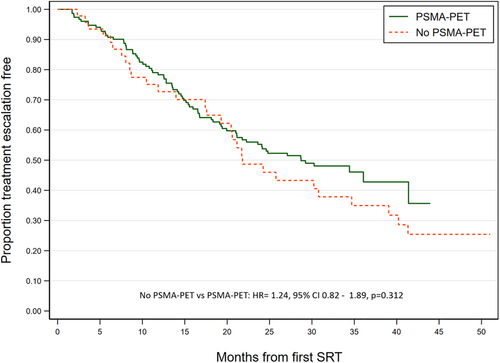Erratum to “Fractionated stereotactic body radiotherapy for up to five prostate cancer oligometastases: Interim outcomes of a prospective clinical trial”
The authors would like to correct an error in the reporting of one of the secondary outcomes—treatment escalation free survival (TE-FS)—in the originally published interim results of the TRANSFORM phase II trial.
This error affects N = 17 participants who were censored from the Kaplan-Meier analysis of TE-FS. In brief, the censor dates for these N = 17 participants erroneously defaulted to the data cut-off date for the interim analysis, rather than the true (earlier) date that these participants should have been considered censored.
Consequently, the originally reported median TE-FS of 27.1 months (95% CI 21.8-29.4) was 6 months longer than the true median length of TE-FS, 21.1 months (95% CI 18.3-26.9). Minor and insignificant differences in the subgroup analysis of TE-FS were found, with no change in the interpretation of these results. None of the other outcomes, including the primary outcome, were affected.
The authors sincerely apologise for this error.
- At the time of last follow-up, 105 patients had treatment escalation. The median TE-FS for the cohort was 21.1 months (95% CI 18.3-26.9 months). Increasing age (hazard ratio [HR] = 1.36, 95% CI 1.28-1.46, P < .001) was a statistically significant predictor for treatment escalation. Prior ADT (HR = 2.23, 95% CI 1.40-3.57, P = .001) but not concurrent ADT (HR = 1.49, 95% CI 0.75-2.96, P = .25) was also associated with poorer TE-FS compared to hormone naïve patients (Figure 1A). Patients with both bone and nodal lesions were at increased risk of treatment escalation compared to bone only (HR = 1.83, 95% CI 0.96-3.50, P = .066) (Figure 1B); however, the association was not statistically significant. There was no significant difference in TE-FS when comparing the node only and bone only groups (HR = 0.78, 95% CI 0.49-1.24, P = .296) or when comparing patients with 4-5 vs 1-3 initial lesions (HR = 1.11, 95% CI 0.71-1.73, P = .646) (Figure 1C).
REFERENCE
Bowden P, See AW, Frydenberg M, et al. Fractionated stereotactic body radiotherapy for up to five prostate cancer oligometastases: interim outcomes of a prospective clinical trial. Int J Cancer. 2020;146:161-168. doi:10.1002/ijc.32509








